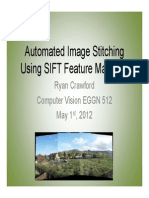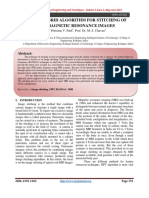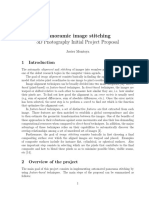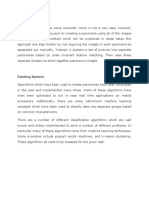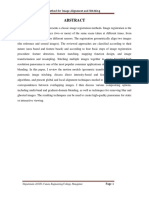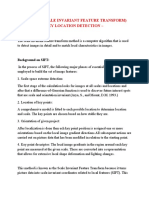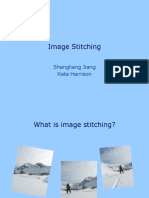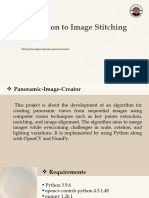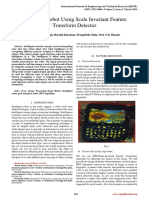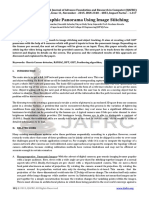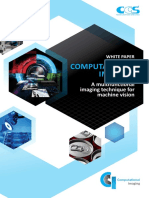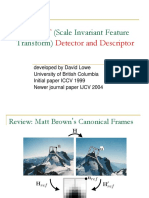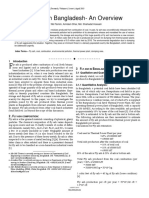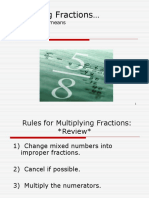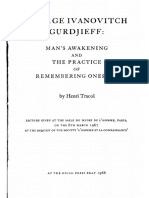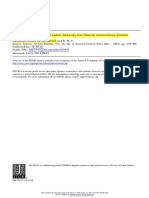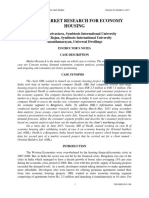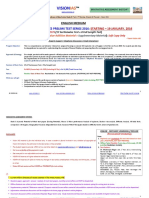0% found this document useful (0 votes)
138 views5 pagesPaper On Image Stitching D10
The document discusses image stitching, which is the process of merging multiple images into a single panoramic image. It can be done using direct pixel intensities or by finding invariant features across images. The SIFT algorithm finds key points and descriptors to match features between images and determine how they should be stitched together. The process involves detecting SIFT features, finding matching key points, assessing homography to determine valid matches, and stitching the images by trimming overlapping borders. The goal is to seamlessly blend images to produce a high quality merged panoramic image that accurately reflects the original source image.
Uploaded by
nikil chinnaCopyright
© © All Rights Reserved
We take content rights seriously. If you suspect this is your content, claim it here.
Available Formats
Download as DOCX, PDF, TXT or read online on Scribd
0% found this document useful (0 votes)
138 views5 pagesPaper On Image Stitching D10
The document discusses image stitching, which is the process of merging multiple images into a single panoramic image. It can be done using direct pixel intensities or by finding invariant features across images. The SIFT algorithm finds key points and descriptors to match features between images and determine how they should be stitched together. The process involves detecting SIFT features, finding matching key points, assessing homography to determine valid matches, and stitching the images by trimming overlapping borders. The goal is to seamlessly blend images to produce a high quality merged panoramic image that accurately reflects the original source image.
Uploaded by
nikil chinnaCopyright
© © All Rights Reserved
We take content rights seriously. If you suspect this is your content, claim it here.
Available Formats
Download as DOCX, PDF, TXT or read online on Scribd
/ 5



